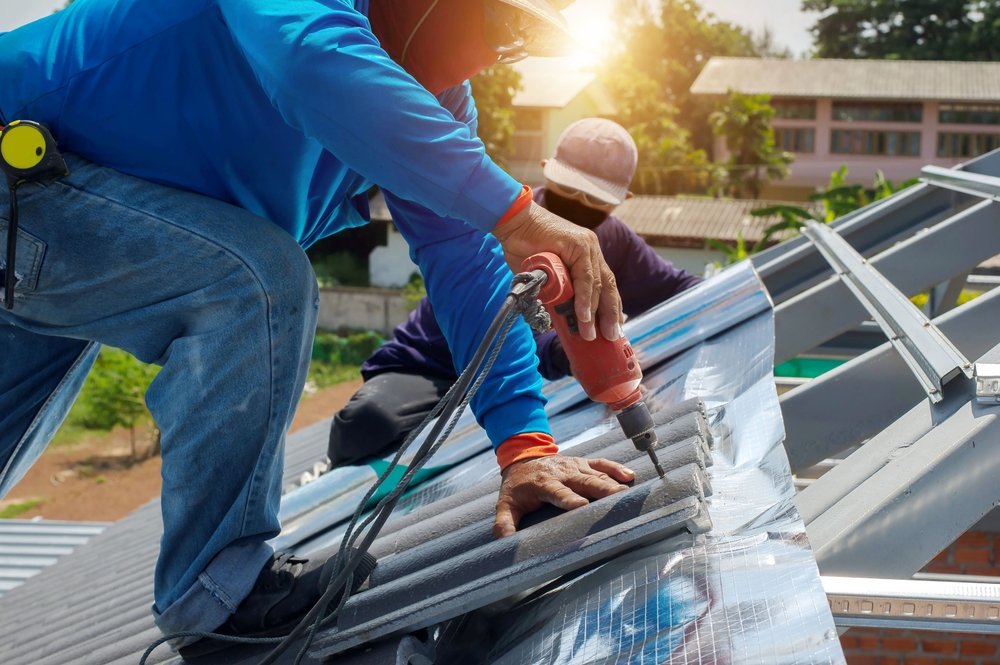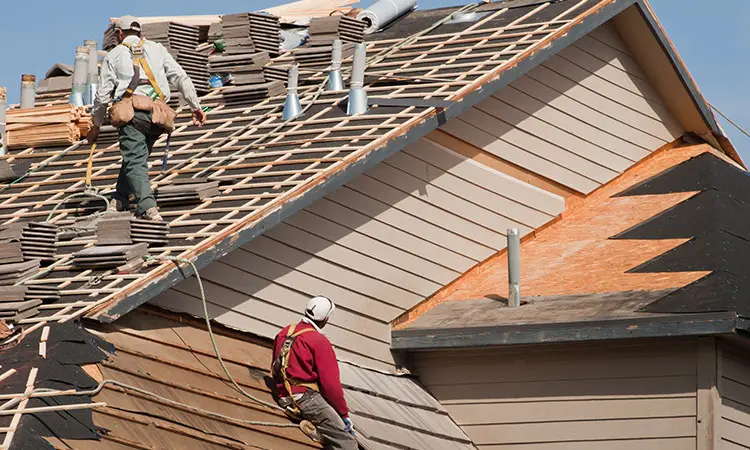Oahu Roofing: Comprehensive Roofing Services in the Oahu Area
Oahu Roofing: Comprehensive Roofing Services in the Oahu Area
Blog Article
Recognizing the Various Types of Roofings: A Comprehensive Overview for Homeowners
With a selection of options-- varying from the traditional gable to the modern flat-- each kind provides unique benefits and challenges that must align with the homeowner's environmental factors to consider and specific demands. As we discover the complexities of numerous roof covering types, it comes to be apparent that one dimension does not fit all; the right option may shock you.
Gable Roofs
Gable roofings, identified by their triangular shape, are amongst one of the most popular roof covering styles because of their simpleness and effectiveness in dropping water and snow. This layout features two sloping sides that satisfy at a ridge, enabling for reliable water drainage and minimizing the danger of water buildup. The high pitch frequently connected with gable roofings enhances their ability to deal with heavy rainfall, making them ideal for numerous climates.
In addition to their functional advantages, gable roofs supply visual versatility. They can be adapted to various building designs, from traditional to modern homes. The layout can likewise fit extra functions such as dormer windows, which improve natural light and ventilation in the attic space.
Additionally, saddleback roofs provide sufficient space for insulation, adding to power performance. Home owners can pick from a variety of roof covering products, including asphalt tiles, steel, and ceramic tiles, further boosting personalization choices.
Despite their benefits, saddleback roofs may call for extra assistance in locations susceptible to high winds or heavy snowfall. Overall, the gable roof covering continues to be a preferred choice because of its mix of capability, resilience, and aesthetic allure.
Flat Roofs
Flat roofings are frequently recognized for their minimalist style and useful applications, specifically in industrial and industrial setups (oahu roofing). These roofings feature a straight or virtually horizontal surface, which allows for simple construction and functional area utilization. While they might lack the visual allure of angled roofs, flat roofings provide countless advantages, particularly in city atmospheres where making best use of room is vital
One of the key advantages of flat roofings is their ease of access. Homeowners can make use of the roof area for different purposes, such as rooftop yards, balconies, or photovoltaic panel installations. In addition, level roofings are commonly more cost-effective to install and maintain contrasted to their sloped equivalents, as they call for fewer materials and labor.
Nevertheless, level roofs do present certain difficulties. Correct water drainage is necessary to protect against water pooling, which can lead to leakages and structural damage. Hence, selecting top quality waterproofing materials and regular examinations are important for making sure durability. Common products utilized for flat roofings consist of built-up roofing (BUR), modified asphalt, and single-ply membranes, each offering unique advantages. In general, level roofs work as a adaptable and useful selection for lots of homeowners and services alike.
Hip Roofs
Hip roofs are characterized by their sloped sides that merge on top, creating a ridge. This layout stands out from gable roofs, as all four sides of a hip roof incline downwards towards the walls, offering an extra steady structure. The angle of the slopes can differ, permitting versatility in building visual appeals and functionality.
Among the primary benefits of hip roofings is their capability to withstand hefty winds and damaging weather. The sloped surfaces allow better water drain, decreasing the risk of leakages and water damage. In addition, hip roofing systems supply raised attic room space, which can be made use of for storage or perhaps converted into habitable areas.
Nevertheless, building a hip roof can be much more intricate and expensive than easier roofing types, such as gable roofing systems. The added material and labor involved in producing the slopes and guaranteeing appropriate architectural stability can lead to greater expenses. In spite of these downsides, numerous homeowners prefer hip roofing systems for their toughness, aesthetic allure, and possibility Click This Link for energy effectiveness.
Mansard Roofs
Mansard roofs, often acknowledged by their one-of-a-kind four-sided design, function two slopes on each side, with the lower slope being steeper than the upper. This building style, originating from France in the 17th century, is not just aesthetically attractive but functional, as it maximizes the functional room in the upper floorings of a structure. The high reduced incline permits for even more clearance, making it a perfect selection for attics or lofts, which can be transformed into living areas.
Mansard roof coverings are defined by their convenience, accommodating various building designs, from typical to modern. They can be created with different products, including asphalt tiles, slate, or metal, supplying home owners with a series of alternatives to match their budgets and choices. Furthermore, the style enables for the assimilation of dormer home windows, boosting natural light and ventilation in the top levels.
However, it is necessary to consider the prospective downsides. Mansard roofing systems may need more upkeep because of the complexity of their layout, and their high inclines can be testing for snow and rainfall overflow. In general, mansard roofing systems combine style with practicality, making them a preferred option among house owners seeking distinct architectural attributes.
Lost Roofing Systems
As property owners progressively look for simplicity and capability in their architectural styles, dropped roofs have actually become a preferred choice. Identified by a solitary sloping plane, a shed roof covering provides a minimalist aesthetic that complements various home styles, from contemporary to rustic.
Among the main benefits of a shed roofing is its straightforward construction, which commonly translates to lower labor and material expenses. This layout enables effective water drainage, reducing the danger of leaks and water damage. Furthermore, the upright incline provides sufficient room for skylights, boosting natural light within the inside.
Dropped roof coverings additionally supply flexibility in regards to usage. They can be properly incorporated right into enhancements, garages, or outside frameworks like structures and sheds. Moreover, this roofing design can fit various roof products, including metal, asphalt shingles, or perhaps environment-friendly roofings, straightening with green initiatives.
However, moved here it is vital to take into consideration regional environment problems, as hefty snow loads might demand changes to the roofing's angle or framework. On the whole, dropped roofings provide a functional and aesthetically pleasing option for homeowners wanting to maximize capability without jeopardizing style.
Verdict


Gable roofing systems, defined by their triangular shape, are among the most prominent roof covering styles due to their simplicity and efficiency in shedding water and snow. oahu roofing. The high pitch typically associated with gable roofing systems improves their ability browse around these guys to handle heavy rainfall, making them appropriate for various climates
While they might do not have the visual appeal of pitched roof coverings, level roofs offer numerous advantages, particularly in metropolitan environments where making the most of space is crucial.

Report this page